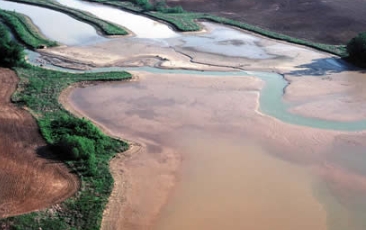Fluvial geomorphology is the study of how rivers shape the land. Rivers are powerful agents of erosion and deposition, constantly reshaping the landscape.
The Process of Erosion and Deposition
Rivers erode the land by carrying sediment downstream. This erosion can happen through processes like abrasion, where sediment particles scrape against the riverbed and banks, or through hydraulic action, where the force of the flowing water dislodges and carries away sediment.
Deposition is the process by which rivers drop sediment they have been carrying. This can happen when the velocity of the river decreases, causing the sediment to settle out of the water and form new landforms like riverbanks or floodplains.
Landforms Created by Rivers
Rivers create a variety of landforms through erosion and deposition. Meanders are curves in a river’s path that form as the flowing water erodes the outer bank of a curve and deposits sediment on the inner bank, causing the river to bend.
Oxbow lakes are formed when a meander becomes so pronounced that the river cuts off the neck of land between two bends, creating a U-shaped lake.
Floodplains are flat areas adjacent to a river that are covered in sediment during times of high water flow. As the river floods, it deposits sediment on the floodplain, building it up over time.
The Importance of Studying Fluvial Geomorphology
Understanding how rivers shape the land is important for managing and protecting the environment. By studying fluvial geomorphology, scientists can predict how rivers will change over time and develop strategies for managing erosion and flood risks.
By studying the patterns of erosion and deposition in a river, researchers can also learn about the history of the landscape and the processes that have shaped it over time.
In conclusion, the science of fluvial geomorphology is a fascinating field that helps us better understand how rivers shape the land. By studying the processes of erosion and deposition, as well as the landforms created by rivers, scientists can gain insights into the dynamic forces that shape our planet’s landscapes.

